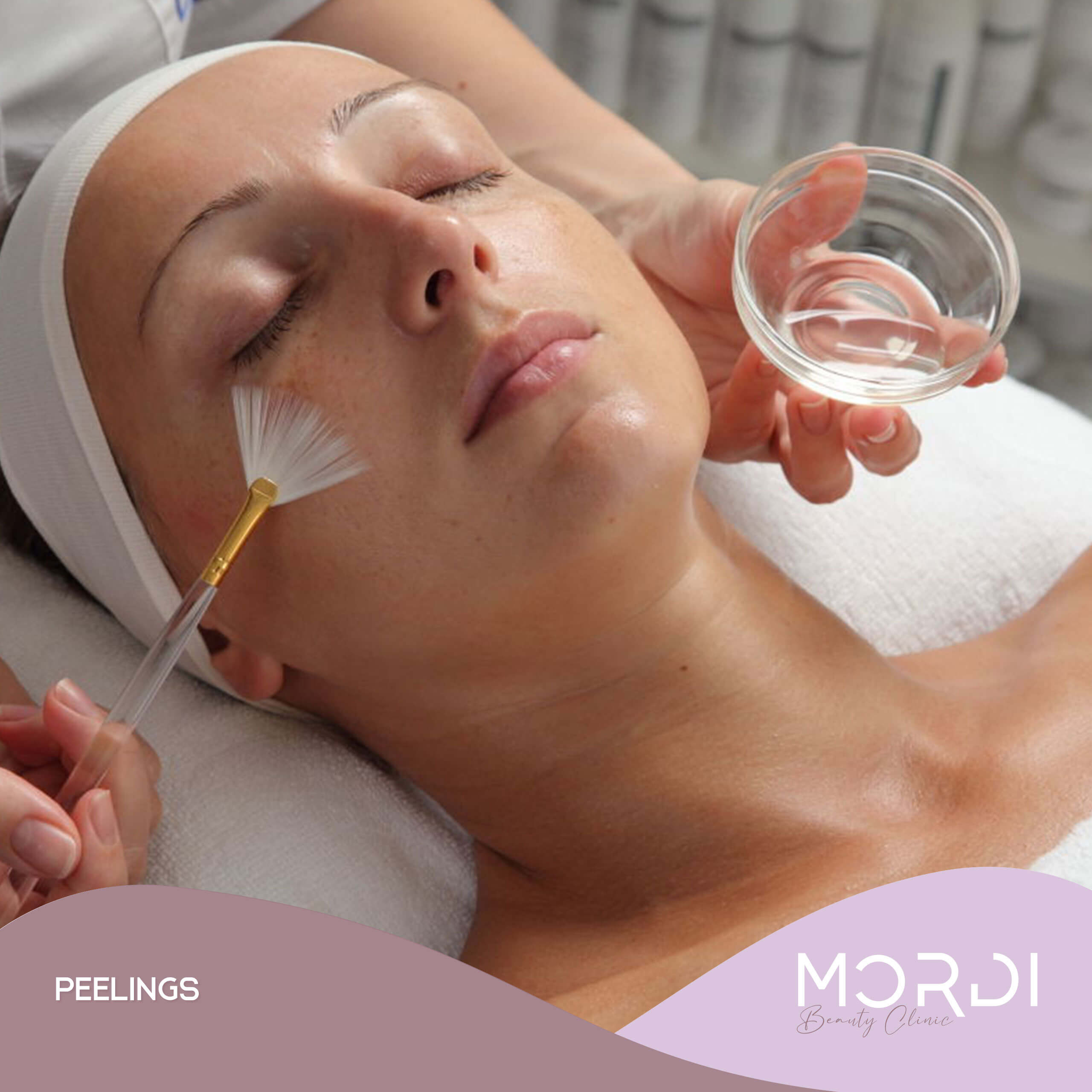What are Peelings?
The dermatological peel is designed for patients seeking a non-invasive treatment option for mild to moderate acne scars. The procedure uses a combination of microdermabrasion and chemical peels to gently exfoliate the skin, remove dead cells, and improve the appearance of fine lines and wrinkles.
This procedure helps to rejuvenate and give an improved appearance to the face. It is commonly used to improve skin texture and fade acne scars, pigmentation changes, or wrinkles.
It is an effective way to rejuvenate the skin. The different types of peeling differ in the depth of their effects on the skin. Superficial chemical peel is performed to unclog pores, remove uneven skin pigmentation and sun damage. These types do not need to be used just one after the other; the frequency of the application must be specified by the specialist to include it as part of your skin care routine.
Peelings benefits:
Peelings are used to treat skin conditions such as acne, rosacea, psoriasis, eczema, and other inflammatory skin disorders. They help improve the appearance of sun-damaged skin by removing dead cells and revealing the healthy layers of skin below. They can also remove surface blemishes.
Dermatologists use different types of exfoliation depending on the condition being treated. For example, deep chemical peeling is often used to treat severe acne and rosacea. These peels are very effective in treating redness and inflammation, but they do cause some discomfort. Other peelings are the superficial ones, which are less aggressive and have fewer risks than the deep ones. Superficial peelings are usually done once a year and are used to treat milder forms of acne, such as blackheads and whiteheads.
Types of Peelings:
There are three different types of peelings: superficial chemical peeling, medium depth peeling, deep peeling and they differ by depth and application.
-
Superficial chemical Peelings:The skin is treated with an acid solution, this removes a layer of dead skin cells, they are the softest at the time of application.
-
Medium depth chemical Peelings:This type of peel that uses enzymes to digest the top layer of skin, removes superficial acne scars and hyperpigmentation.
-
Deep Peelings:This type uses laser to remove the upper layers of the skin, it also includes rejuvenation, eliminates or reduces deep scars such as surgical wounds or keloids.
Considerations:
- Patients should wait at least one year after undergoing any type of facial surgery before having a chemical peel.
- This procedure should always be performed by a trained professional.
Side effects:
- A side effect could be an infection if the area being peeled is not washed properly before applying the ointment.
- It's use on large areas of the body is not recommended.
- Peelings may cause redness, swelling, bruising, itching, pain, burning, stinging, tingling, tightness, tenderness, or numbness. These symptoms usually disappear after treatment, but may persist for several days.
At Mordi Beauty Clinic we have a professional and specialized team, contact us and we will answer all your questions.
Schedule appointment:
To schedule an evaluation, please fill in your contact info in the following form, indicating a possible date and the procedure you're interested in.














